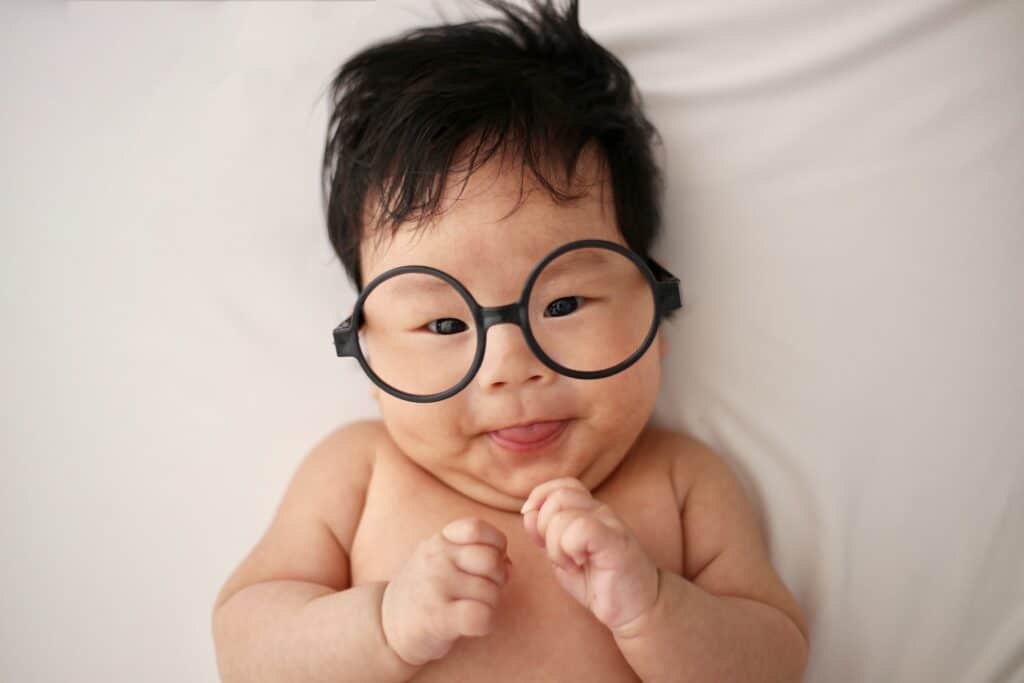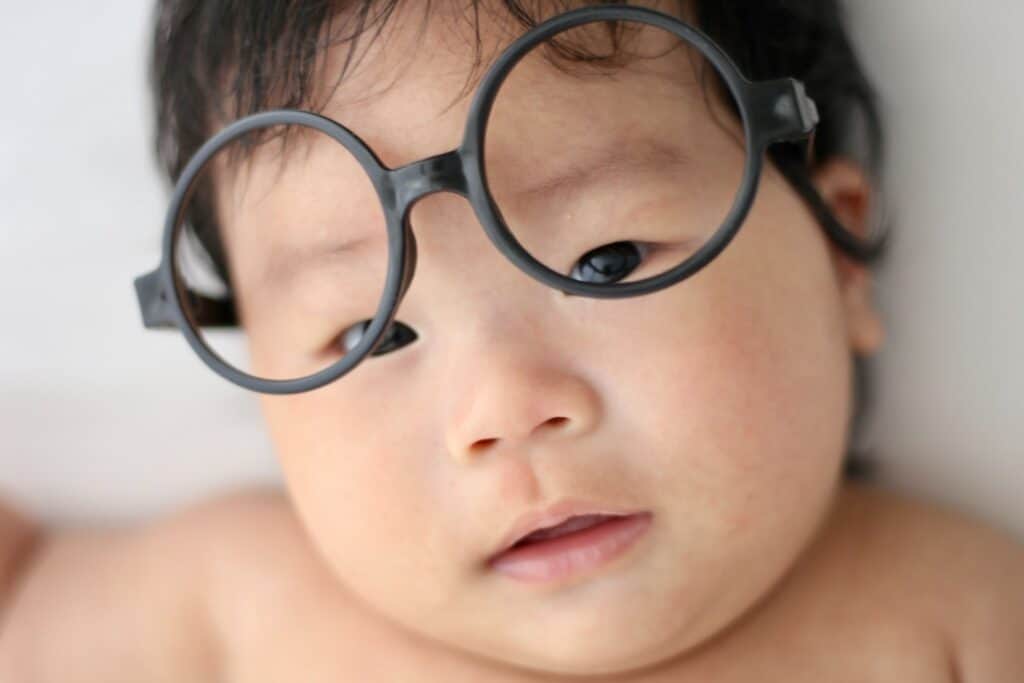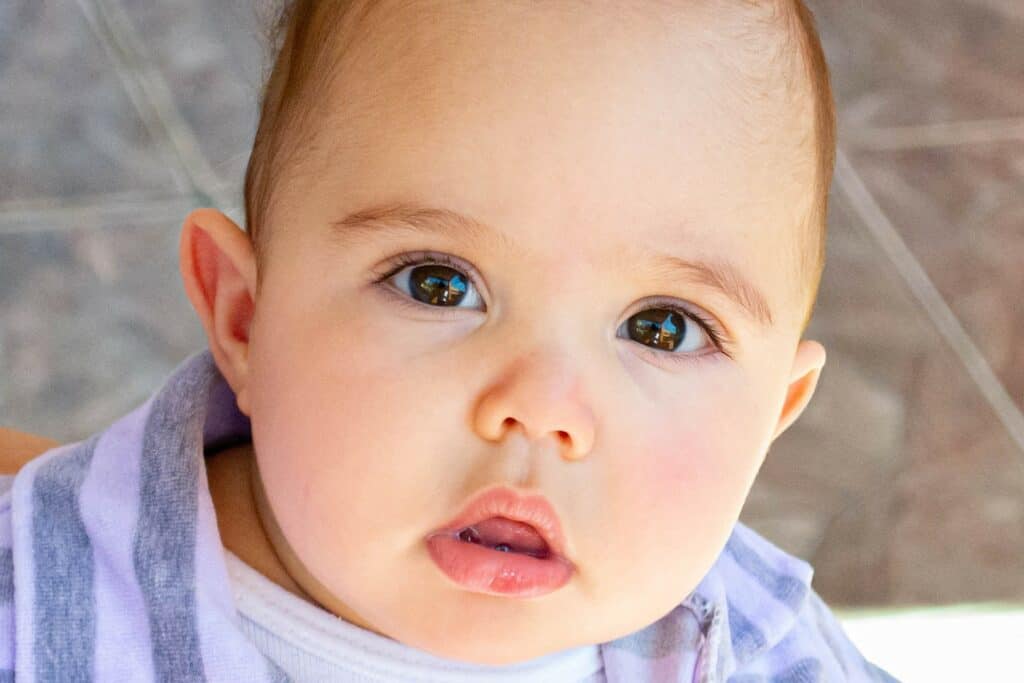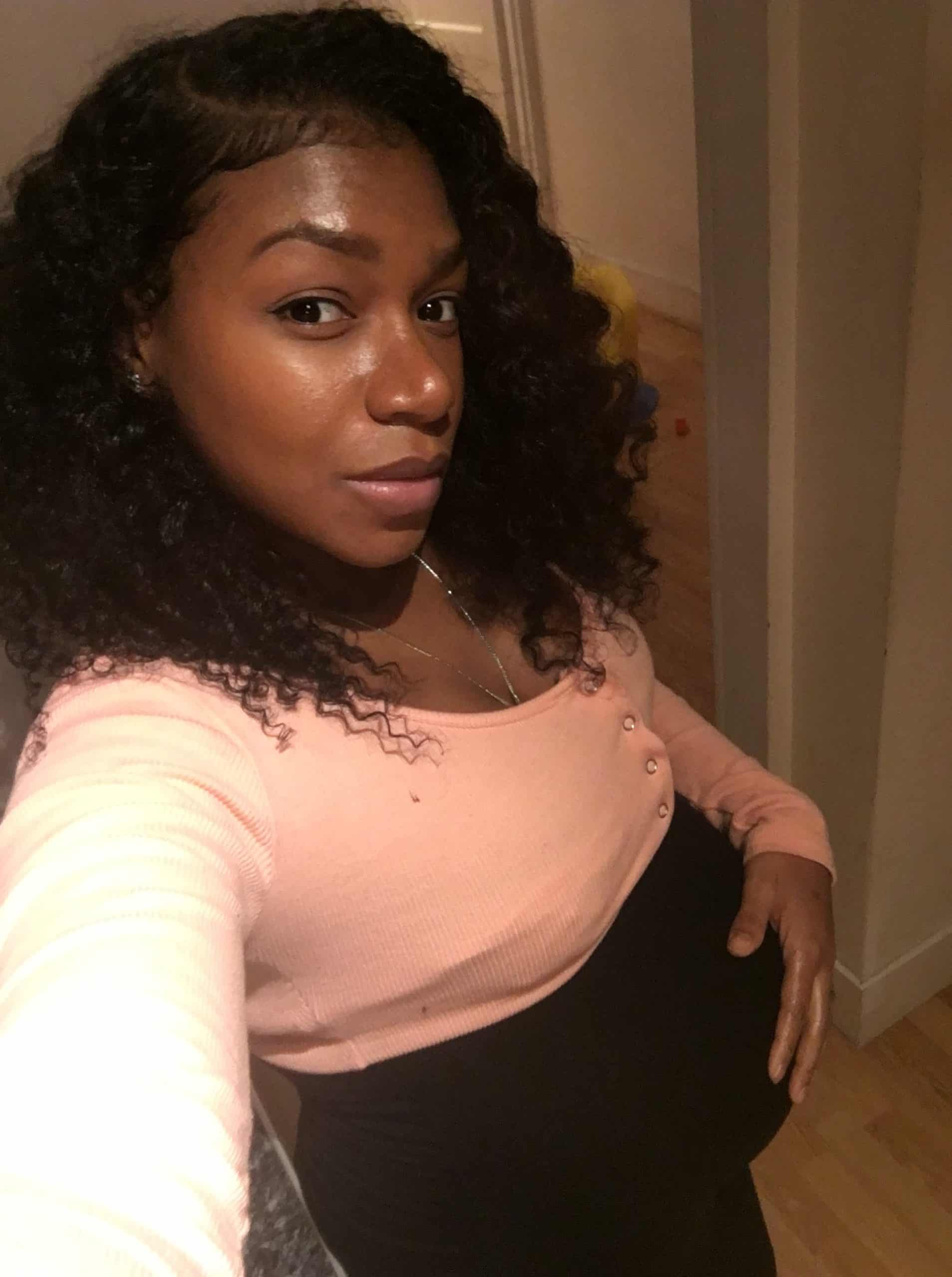Many parents may not realize that their toddler needs glasses until they start school and have a vision screening. However, it’s important to recognize the signs of vision problems in young children before they start to affect their development and learning. In this article, we’ll discuss how to tell if your toddler needs glasses and what steps you can take to ensure their eye health.
Recognizing the Signs of Vision Problems Toddlers may not be able to communicate that they are experiencing vision problems, so it’s important to look out for signs such as squinting, rubbing their eyes, or tilting their head to see better. Other signs may include frequent eye rubbing, sensitivity to light, or excessive tearing. By recognizing these signs early on, you can help your child get the treatment they need to see clearly and avoid any potential developmental delays.
Key Takeaways
- Look out for signs of vision problems in your toddler, such as squinting or rubbing their eyes.
- Regular eye exams are important to catch any vision problems early on.
- Choosing the right glasses for your toddler can help improve their vision and overall development.
Recognizing the Signs of Vision Problems
It can be challenging to determine if your toddler needs glasses, especially if they are too young to communicate their vision problems. However, there are some signs that parents can watch out for to recognize if their toddler has vision problems.
One of the most common signs of vision problems in toddlers is squinting. If your child is squinting frequently, it could be an indication that they are having trouble seeing. Headaches are another common sign of vision problems in toddlers. If your child complains of headaches frequently, it is best to get their eyes checked.
Eye rubbing is another sign of vision problems in toddlers. If your child is rubbing their eyes excessively, it could be an indication that they are experiencing blurry vision. Toddlers with vision problems may also bump into objects frequently or lose their place while reading.
Reading difficulties are another sign of vision problems in toddlers. If your child is struggling with reading or shows disinterest in reading, it could be because they are having difficulty seeing the words. Covering one eye or excessive tearing are also signs of vision problems in toddlers.
Finally, clumsiness and coordination problems can also be a sign of vision problems in toddlers. If your child is frequently tripping or falling, it could be because they are having difficulty seeing their surroundings.
In summary, recognizing the signs of vision problems in toddlers is crucial to ensure that they receive the necessary treatment. If you notice any of the signs mentioned above, it is best to schedule an appointment with an eye doctor as soon as possible.
Understanding Vision Problems in Children
Vision problems in children can be difficult to detect, especially in toddlers who may not yet be able to communicate their visual difficulties. However, it is essential to identify any issues early on to prevent them from worsening and impacting a child’s development. Here are some common vision problems that may affect young children:

Refractive Errors
Refractive errors are the most common vision problems in children. They occur when the shape of the eye prevents light from focusing correctly on the retina, resulting in blurry vision. There are three types of refractive errors: myopia (nearsightedness), hyperopia (farsightedness), and astigmatism. Myopia is when a child can see objects up close clearly but has trouble seeing things far away, while hyperopia is the opposite. Astigmatism is when the cornea is irregularly shaped, causing blurry vision at all distances.
Strabismus
Strabismus is a condition where the eyes do not align correctly, causing one eye to turn inward, outward, upward, or downward while the other eye looks straight ahead. This condition can cause double vision, amblyopia (lazy eye), and depth perception issues.
Amblyopia
Amblyopia, also known as lazy eye, is a condition where the brain favors one eye over the other, causing the weaker eye to become suppressed. This can lead to permanent vision loss in the weaker eye if left untreated.
Convergence Insufficiency
Convergence insufficiency is a condition where the eyes have trouble working together when focusing on nearby objects. This can cause headaches, eye strain, and difficulty reading.
It is essential to have your child’s eyes checked regularly, even if they do not show any signs of vision problems. Early detection and treatment can prevent vision problems from worsening and help your child’s eyes develop correctly.
The Importance of Regular Eye Exams
Regular eye exams are essential for detecting vision problems in toddlers. Eye exams can help identify any underlying eye conditions that may lead to vision problems in the future. It is recommended that children have their first comprehensive eye exam at the age of six months, followed by another exam at the age of three years, and then again before starting school.
A comprehensive eye exam is different from a vision screening. A vision screening is a basic test that checks for visual acuity, while a comprehensive eye exam is a more thorough evaluation of the eyes and vision. During a comprehensive eye exam, an eye doctor or pediatric optometrist will check for eye muscle movement, eye coordination, and eye health. They will also evaluate the child’s vision using different tests, such as the use of eye charts and lenses.
Eye exams are essential because many vision problems in children do not have obvious symptoms. A child may not be aware that they have a vision problem, and parents may not notice any signs until the condition has progressed. Early detection of vision problems is crucial because it can prevent further damage to the eyes and improve the child’s quality of life.
It is important to choose a qualified eye doctor or ophthalmologist who has experience working with children. A pediatric optometrist or ophthalmologist has specialized training in the diagnosis and treatment of eye conditions in children. They can provide the appropriate care and treatment for your child’s specific needs.
In conclusion, regular eye exams are crucial for the early detection of vision problems in toddlers. Parents should ensure that their children have a comprehensive eye exam at the recommended intervals to ensure optimal eye health.
How Vision Problems Affect Your Child’s Life
Vision problems can have a significant impact on a child’s life, both in the short and long term. If left untreated, vision problems can lead to developmental delays, poor academic performance, and a reduced quality of life.
In terms of academic performance, children with vision problems may struggle to read, write, and participate in classroom activities. They may also have difficulty focusing on tasks and paying attention to details. This can lead to poor grades, lower self-esteem, and a lack of interest in learning.
In addition to academic performance, vision problems can also affect a child’s speech and language development. If a child is unable to see clearly, they may have difficulty imitating sounds and pronouncing words correctly. This can lead to delays in speech and language development, which can have a lasting impact on a child’s ability to communicate effectively.
Vision problems can also affect a child’s social and emotional development. Children with vision problems may feel isolated or left out of activities with their peers, which can lead to feelings of sadness, frustration, and anger. They may also have difficulty participating in sports and other physical activities, which can lead to a lack of confidence and a reduced quality of life.
Finally, vision problems can also affect a child’s brain development. The brain relies on visual input to develop and grow, and if a child is unable to see clearly, their brain may not develop as quickly or efficiently as it should. This can lead to long-term developmental delays and other cognitive problems.
Overall, it is essential to recognize the signs of vision problems in young children and seek treatment as soon as possible. With early intervention, most vision problems can be corrected, and children can go on to lead happy, healthy, and successful lives.
Treatment Options for Vision Problems
If a toddler is diagnosed with a vision problem, there are various treatment options available to correct the issue. Treatment options depend on the type of vision problem and the severity of the condition.

Glasses
Glasses are the most common treatment option for toddlers with vision problems. Prescription eyeglasses can correct refractive errors such as nearsightedness, farsightedness, and astigmatism. Glasses can help improve visual acuity, eye alignment, and binocular vision.
When selecting glasses for a toddler, it is important to choose frames that fit properly and are comfortable to wear. Glasses should be made from durable materials and have shatterproof lenses to prevent injury.
Eye Patches
Eye patches are often used to treat amblyopia or “lazy eye.” Wearing an eye patch over the stronger eye can help improve vision in the weaker eye. Eye patches are usually worn for several hours a day and can be used in conjunction with glasses.
Contact Lenses
Contact lenses may be an option for older toddlers with certain vision problems. Contact lenses can correct refractive errors and may be more comfortable for toddlers who are active or participate in sports.
However, contact lenses require proper care and maintenance to prevent infection and other complications. Parents should consult with an eye care professional to determine if contact lenses are a suitable option for their child.
Surgery
In some cases, surgery may be necessary to correct a vision problem. Surgery can be used to correct strabismus (misaligned eyes) or other eye conditions that cannot be corrected with glasses or contact lenses.
Surgery is typically performed under general anesthesia and may require a brief hospital stay. However, most children recover quickly and experience significant improvement in their vision.
Eye Care
Regardless of the treatment option chosen, it is important for parents to prioritize their child’s eye health. Regular eye exams can help detect vision problems early and prevent long-term damage to the visual system.
Parents should also encourage their child to take breaks from screen time and engage in outdoor activities to promote healthy eye development.
Choosing the Right Glasses for Your Toddler
Once you have determined that your toddler needs glasses, it is important to choose the right pair of eyeglasses for them. Here are some tips to help you make the right choice:

1. Consider the Frame Material
The frame material is an important factor to consider when choosing glasses for your toddler. Frames made of plastic or acetate are lightweight and durable, making them a good choice for young children. Metal frames, on the other hand, are more durable but can be heavier and less comfortable for some children.
2. Choose the Right Size
The size of the glasses is another important factor to consider. Glasses that are too big or too small can be uncomfortable and may not provide the right level of vision correction. Be sure to measure your toddler’s face and choose glasses that fit properly.
3. Select the Right Shape
The shape of the glasses can also affect how comfortable they are for your toddler to wear. Round or oval frames are generally a good choice for young children, as they are less likely to dig into the skin or cause discomfort. However, you should also consider your toddler’s face shape and choose glasses that complement their features.
4. Consider the Prescription
Finally, it is important to consider your toddler’s prescription when choosing glasses. The American Optometric Association recommends that children under the age of six should have their glasses made with polycarbonate lenses, as they are more durable and less likely to break. Additionally, you should choose lenses that are scratch-resistant and provide the right level of UV protection.
By taking these factors into consideration, you can choose the right pair of glasses for your toddler and ensure that they are comfortable and able to see clearly.
When to Consult a Pediatrician or Eye Specialist
If a parent suspects that their toddler might have a vision problem, it is important to consult with a pediatrician or eye specialist. Some signs that a child may be experiencing vision problems include:
- Squinting or rubbing their eyes frequently
- Holding objects too close to their face
- Tilting their head to one side
- Blinking excessively
- Misaligned eyes
- Difficulty focusing on objects or following them with their eyes
- Eye fatigue or headaches
A pediatrician can perform a basic vision screening during a routine check-up. However, if the pediatrician suspects that there may be a problem with the child’s vision, they may refer the child to an eye specialist for a more thorough exam.
An eye specialist can perform a comprehensive eye exam to determine the child’s visual acuity and eye health. This exam may include tests to check for poor vision, misaligned eyes, and other vision problems in toddlers. If a vision problem is detected, the eye specialist can prescribe glasses or other treatments to correct the issue.
It is important for parents to pay attention to their child’s vision and to consult with a medical professional if they suspect that there may be a problem. Early detection and treatment of vision problems can help ensure that a child’s vision develops properly and that they are able to see clearly as they grow and develop.
Maintaining Eye Health and Clear Vision
Maintaining eye health and clear vision is essential for toddlers. Parents can take the following steps to help their child maintain good eye health and clear vision:

- Schedule regular eye exams: Regular eye exams can help detect vision issues early on and ensure that your child’s visual system is developing correctly. The American Optometric Association recommends that children have their first eye exam at six months of age, another at age three, and another before starting school.
- Encourage outdoor play: Outdoor playtime can help promote good eye health and reduce the risk of developing nearsightedness. Spending time outside can also help improve depth perception, which is essential for activities like catching a ball.
- Limit screen time: Too much screen time can strain a child’s eyes and lead to vision issues. The American Academy of Pediatrics recommends that children between the ages of two and five have no more than one hour of screen time per day.
- Provide a healthy diet: A healthy diet can help promote good eye health. Foods rich in vitamins A, C, and E, as well as omega-3 fatty acids, can help maintain clarity and support eye health.
- Ensure proper lighting: Proper lighting can help reduce eye strain and promote clear vision. Make sure that your child’s environment is well-lit, especially when reading or doing homework.
By following these steps, parents can help maintain their child’s eye health and promote clear vision.
Related posts:
Frequently Asked Questions
What are the signs that my toddler may need glasses?
Some signs that your toddler may need glasses include squinting, rubbing their eyes frequently, tilting their head to see better, and holding objects very close to their face. If you notice any of these signs, it’s best to schedule an eye exam with a pediatric ophthalmologist.
At what age can a child be diagnosed with needing glasses?
Children as young as six months old can be diagnosed with needing glasses. However, most children are diagnosed between the ages of 2 and 5 years old.
How do doctors determine if a toddler needs glasses?
Doctors use a variety of tests to determine if a toddler needs glasses. These tests may include a visual acuity test, a retinoscopy, and a subjective refraction. The doctor will also consider the toddler’s age, medical history, and family history of vision problems.
What are the risks of not getting my toddler glasses if they need them?
If a toddler needs glasses but doesn’t receive them, it can lead to a variety of problems. These problems may include headaches, eye strain, and difficulty with reading and learning.
Is it common for toddlers to need glasses?
Yes, it is common for toddlers to need glasses. In fact, approximately 1 in 20 preschool-aged children wear glasses.
How do I encourage my toddler to wear their glasses?
Encouraging your toddler to wear their glasses can be a challenge, but there are some things you can do to help. One approach is to make wearing glasses a positive experience by choosing frames that your toddler likes and praising them for wearing their glasses. You can also make sure that the glasses fit well and are comfortable to wear.

Iesha is a loving mother of 2 beautiful children. She’s an active parent who enjoys indoor and outdoor adventures with her family. Her mission is to share practical and realistic parenting advice to help the parenting community becoming stronger.
